How to make a candelabra centerpiece
Create a fairytale candelabra centerpiece for fall using the last of the season's blooms – from floral designer Brigitte Girling

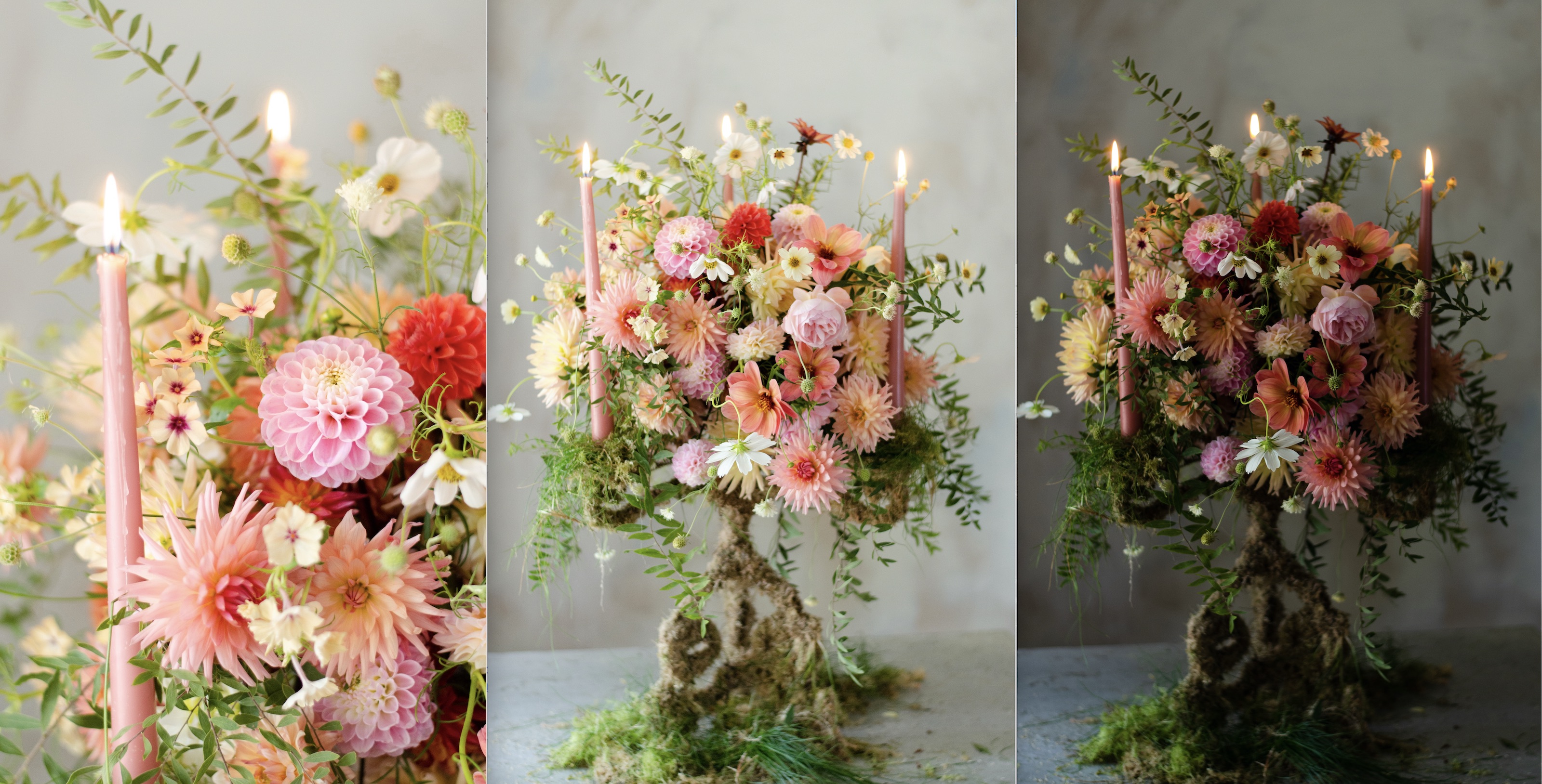
When it comes to decor that elevates your table from everyday supper spot to guest-ready entertainment zone – consider this artful candelabra centerpiece.
Created from a moss-covered candelabra dressed with dahlias, it's the kind of scene-stealing table centerpiece that will seal your status as a stylish hostess.
So, the next time you're thinking of dining room ideas, this will help you dress your room to impress.
How to make a candelabra centerpiece
If you're looking for fall table decor ideas, this candelabra centerpiece is perfect.
'Tablescaping is a huge trend, especially as intimate dinners have replaced large-scale events like parties over the past few months,' says Andréa Childs, Editor of Country Homes & Interiors.
'The art of combining flowers and foliage, flatware, glasses, table accessories and glassware brings beauty to the table. It's also a moment to pause during all the prep, and appreciate being able to share your home and table with family and friends.'
'You might decide to create a single standout focal point, such as this moss-covered display, or use a range of dining table styling tricks to make each place setting truly special. Just don't stress and enjoy the opportunity to get creative!'
Design expertise in your inbox – from inspiring decorating ideas and beautiful celebrity homes to practical gardening advice and shopping round-ups.
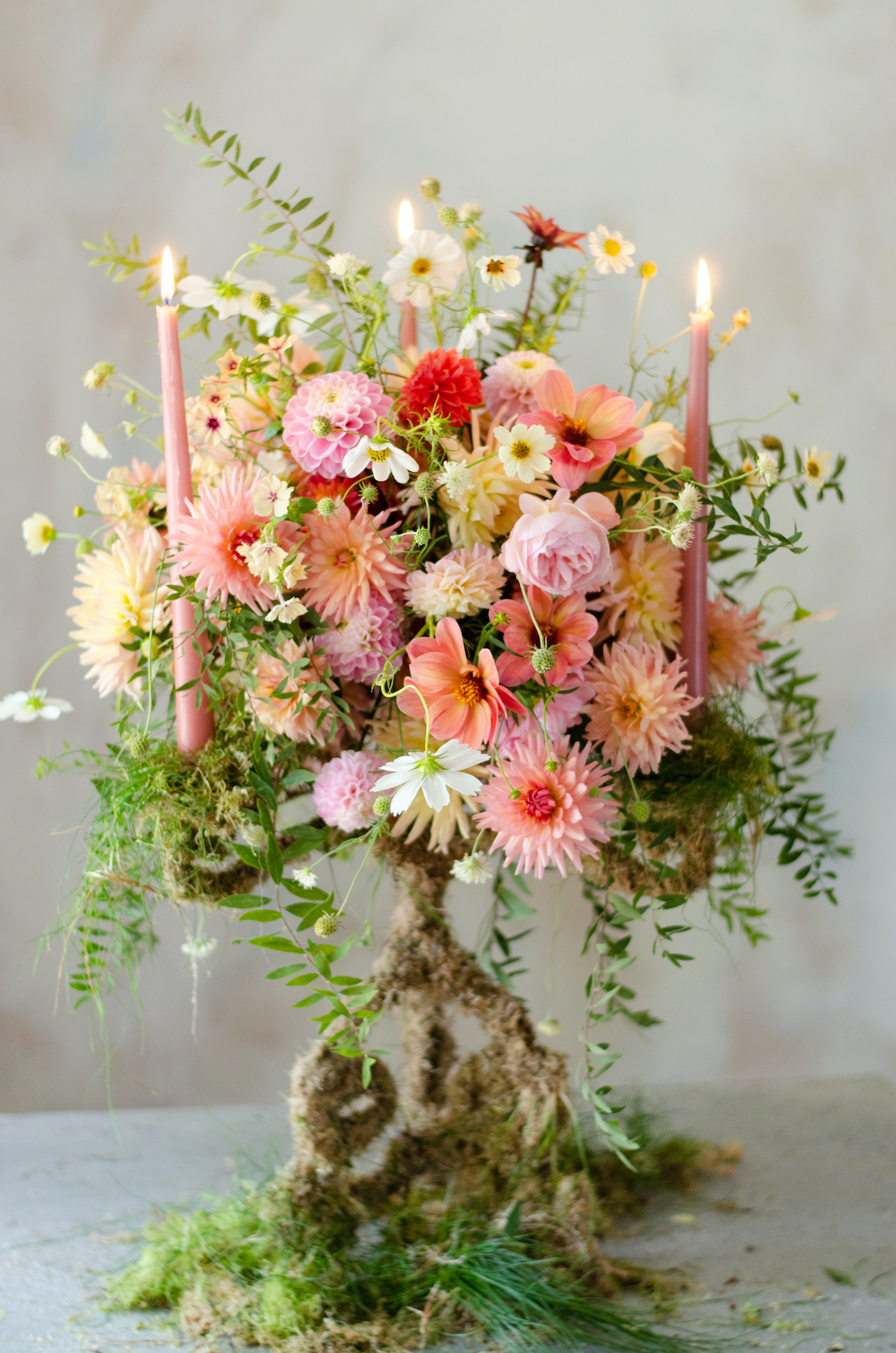
'This design captures the last hurrah of summer and shift into fall,' says floral designer Brigitte Girling of Moss & Stone, who created the display. 'With dahlias, cosmos and scabious, and blowsy roses, it's a tribute to nature's bounty.
'Position this on a table, indoors or out, to create a magical talking point for a celebration. But please do not leave candles unattended.'
You will need:
- Perennials: 15 spirea foliage; 10 scabiosa columbaria, flower and seed heads; 10 coreopsis ‘Starlight’; 50 mixed dahlia, such as 'Jowey Winnie', 'Preference' and 'Diana's Memory'; 15 roses, such as ‘A Shropshire Lad’, ‘Buff Beauty’, ‘Chandos Beauty’.
- Half Hardy Annuals: 7 cosmos ‘Purity’; 10 phlox ‘Crème Brulee’.
- Moss from the lawn, or sphagnum from a reputable source, to cover the candelabra.
- Garden twine.
- Floral wire and chicken wire.
Brigitte Girling grows the flowers for her displays in her own chemical-free wildlife garden.
1. Wrap your candelabra centerpiece with moss
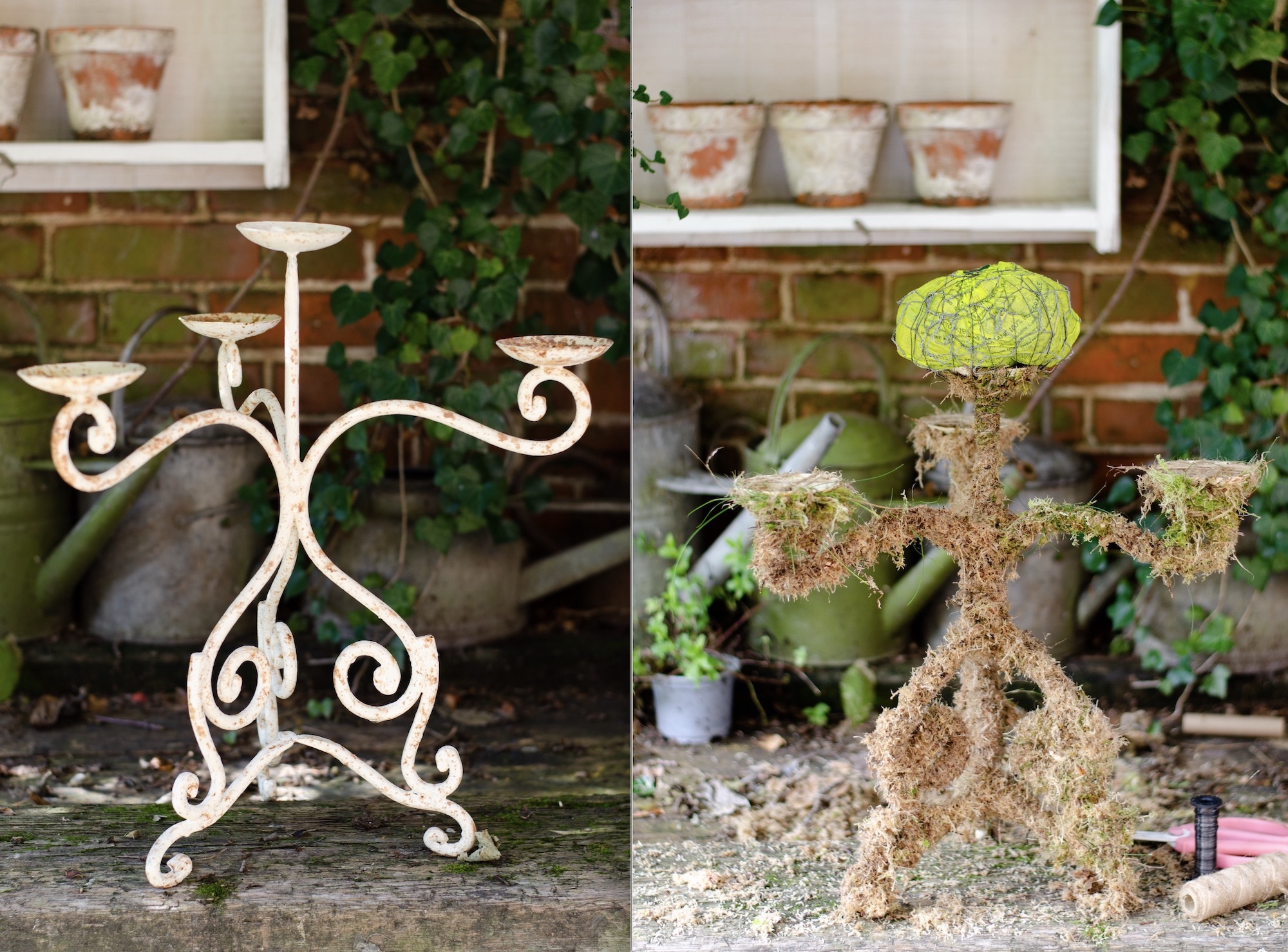
Wrap your candelabra with moss. This takes time, but using garden twine, wrap a handful of moss in place by winding the twine over it tightly.
Do not cut the twine; just keeping adding new clumps of moss. Go lightly, this doesn’t have to be perfect.
2. Create a moss ball
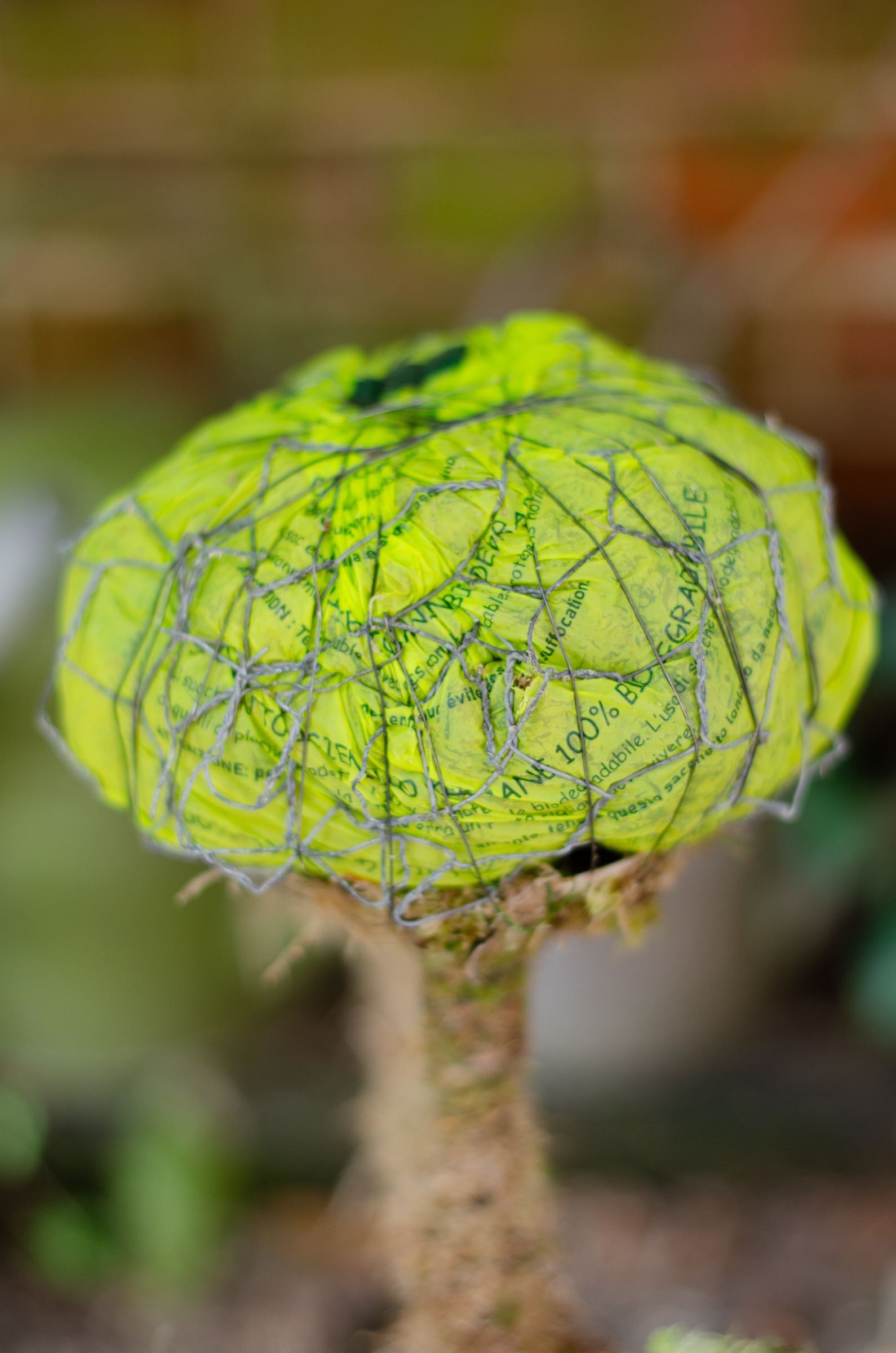
Wet the moss in water, squeeze out the excess and firm into a ball shape.
Wrap your moss ball in a small compostable bag. This will help retain moisture and prevent dripping.
Now wrap with a layer of chicken wire, folding the sides and ends of the chicken wire into itself to hold the shape. This will also help to support the stems.
Attach the moss to the top cup of your candelabra with floral wire or twine. Keep wrapping until the moss ball is secure.
3. Start arranging your flowers
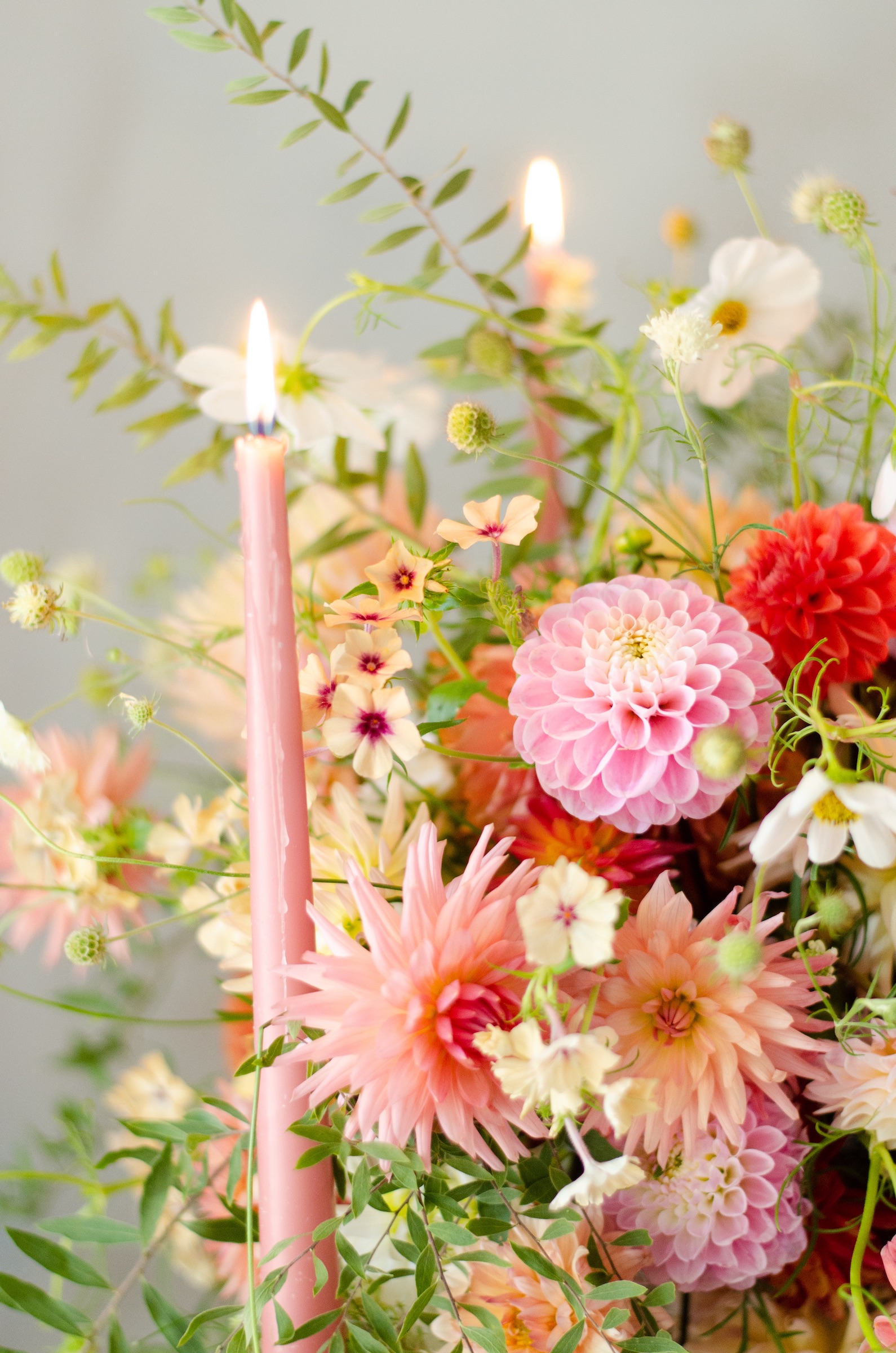
Cutting each stem at a sharp 45 degree angle, add in the spirea to create an outline shape. Punch the stems through the bag and into the moss.
Fill in with the roses and dahlias, always ensuring they are at different angles and heights and of varied shape and color.
Now add in the seedheads and 'floaty' flowers to create movement.
4. Add the candles to finish
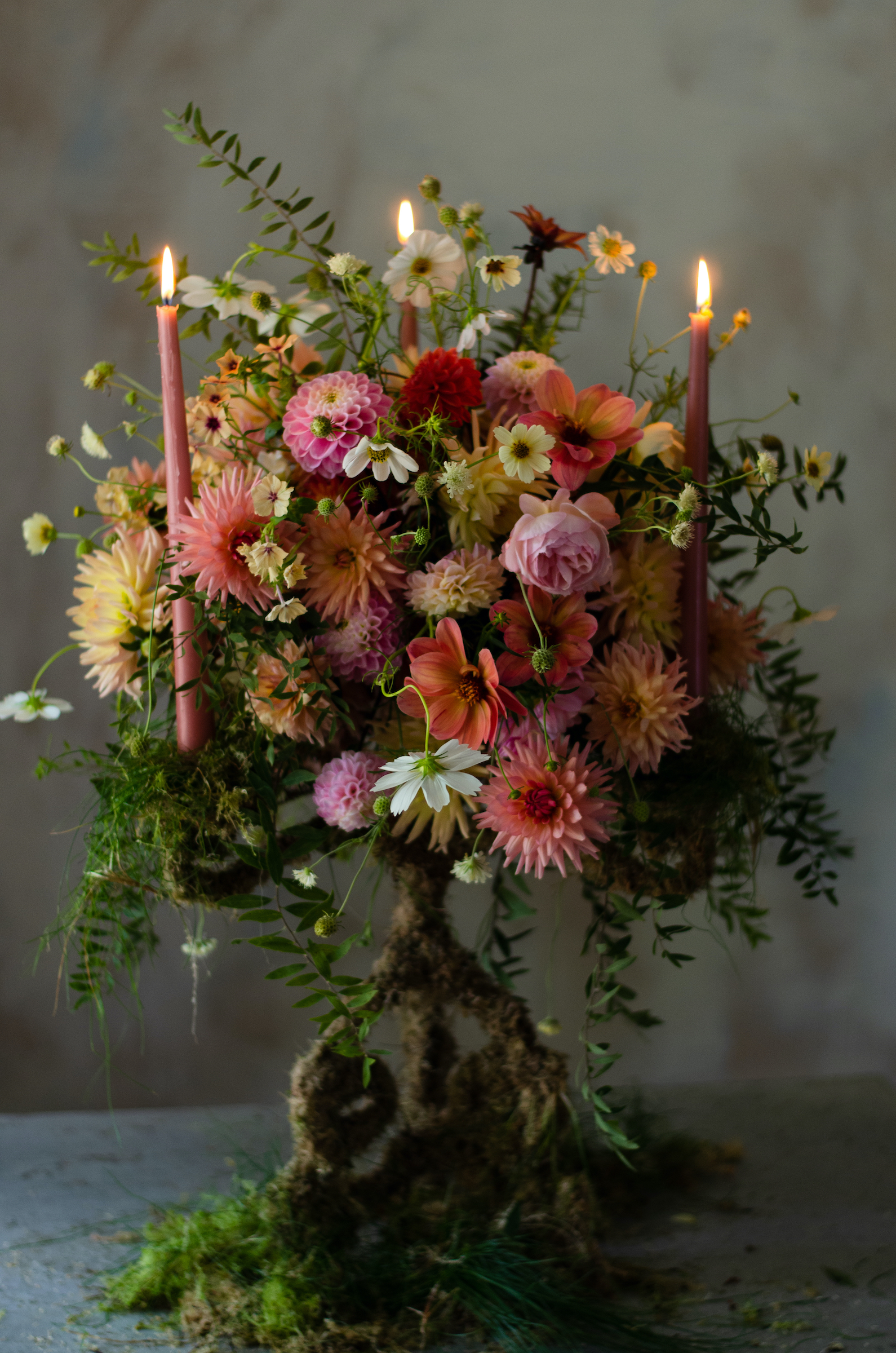
Place the candles in the holder, removing or repositioning any flowers that are a potential fire risk.
This design should last three or four days in a cool room. Spritz occasionally with water to prolong the display.
4 essential floral design elements for a candelabra centerpiece
'I like to think of my flowers as dancing and singing together in my candelabra centerpieces, so I have given the four key floral design elements theatrical names to help you remember them,' says Brigitte Girling.
'Giving some consideration to the role your flowers play in each design really helps when it comes to selecting and using them.'
1. Stage
The framework within which everything else sits. Think delicate foliage, flowering branches, sweet pea vines, clematis, honeysuckle, hellebore, single architectural leaves and jasmine.
2. Chorus
The beautiful backing singers filling the gaps, distracting the eye and supporting the leading ladies. These might be phlox, achillea, sweet pea, blossom, sweet rocket, calendular, smaller roses and ranunculus, hydrangea and wall flowers.
3. Divas
The big showoff elements that demand attention. Often these are kept to a minimum. Consider peonies, roses, dahlias, chrysanthemums, iris, zinnia, and perhaps hellebores, foxgloves and ranunculus.
4. Dancers
The floaty elements that sit above the rest of the design. Again, these are usually kept to a minimum. I like poppies, seed heads, fritillaria, small ranunculus, cow parsley, aquilegia, phlox, epimedium, cosmos and delicate blossom.
Andrea has been immersed in the world of homes, interiors and lifestyle since her first job in journalism, on Ideal Home. She went from women's magazine Options to Frank. From there it was on to the launch of Red magazine, where she stayed for 10 years and became Assistant Editor. She then shifted into freelancing, and spent 14 years writing for everyone from The Telegraph to The Sunday Times, Livingetc, Stylist and Woman & Home. She was then offered the job as Editor on Country Homes & Interiors, and now combines that role with writing for sister title homesandgardens.com.
